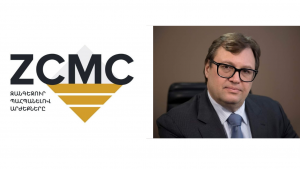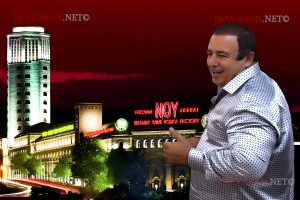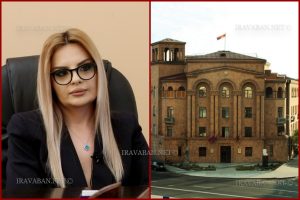After the Armenian Prime Minister’s speech on 17 August, 2018, when he announced that some tools of transitional justice could be introduced in Armenia; the Armenian Lawyers’ Association initiated a process by which two important issues were attempted to resolve. The first was the preparation of a report on the possibility of applying mechanisms of transitional justice in the Republic of Armenia, and the second was the organization of an expert conference on the application of transitional justice mechanisms with the participation of national experts.
Mr. Karen Zadoyan, President of the Armenian Lawyers’ Association said this at the National Assembly today, on 24 May, at the presentation of the report entitled “Applicability of the Mechanisms of Transitional Justice in the Republic of Armenia”.
He mentioned that the report was elaborated within the framework of the EU-funded “Commitment to Constructive Dialogue” project and was published about two months ago, and was presented to the RA Prime Minister and NA Speaker as well.
“The main objective of the report was to present information on transitional justice, its availability in the Republic of Armenia, existing international experience, tools, mechanisms and institutions, as well as through a comparative and analytical approach identify the effective model of minimal risks in case of implementing transitional justice in Armenia,” he said.
According to Karen Zadoyan, the study of international experience has shown that transitional justice fails in countries where there is no apparent and genuine willingness to form a transitional justice system without the involvement of all interested actors in that process, as well as wide awareness among the public.
In the absence of the above mentioned, most probably the expected result would not be achieved.
He also mentioned that the experience of about 35 countries had been studied. “Four key tools of transitional justice are the implementation of criminal justice, truth seeking, reparation programs and institutional reforms. Legal, social, economic, and political context has been studied. International reports on these 4 directions have been studied, where the sections related to Armenia have been assessed and we included these sections in the report with reference to specific reports and the direct links, which explain why transitional justice should be implemented in Armenia,” Karen Zadoyan said.
The ALA President presented the proposals aimed at the possible application of transitional justice in the Republic of Armenia.
“In the case of implementation of transitional justice in the Republic of Armenia it should proceed from the domestic environment of Armenia. Transitional justice is a means of achieving the objectives set out in the Constitution, which cannot be achieved through other conventional systems and the scope of its application should be clearly outlined in the framework of the capabilities provided by the Constitution and conventional commitments of the country. When applying the mechanisms of transitional justice, it is necessary to form a practice of active use of ECHR consultations.
We believe that the period of application of transitional justice should be set for the period of 1991-2018, before the velvet revolution.
It is necessary to include in the scope of cases of application of transitional justice the following:
- cases on corruption crimes on funds stolen from the society and the state, including those concerning the alienation of people’s property for the needs of the society and the state, based on the justification of dominant public interest,
- cases on mass electoral violations during nationwide elections and referenda, their derivative cases, e.g., March 1st 2008;
- cases on encroachments of the right to life and the right to be free from torture.” he mentioned
Karen Zadoyan also spoke about the mechanisms of transitional justice:
- about the possibility of creating specialized courts;
- the necessity to discuss application of amnesty of capital through adoption of law (plea bargaining) and proposal of a deal on a domestic level to the persons illicitly enriched as a result of corruption crimes, guided by both legal and political processes.
- the legal grounds for revising criminal cases and initiating new criminal cases be defined
- after the introduction of transitional justice mechanisms start a discussion on the question of applying amnesty on the representatives of the former authorities who were convicted in the scope of transitional justice.
Speaking about the truth seeking, Karen Zadoyan said that it was proposed to adopt the RA Law “On the Truth and Reconciliation Commission”. The truth seeking processes help to collect facts and assist law enforcement agencies to investigate previously committed crimes and to disclose the historical truth about them. The truth seeking process is primarily carried out by truth and reconciliation commissions as a means of restorative justice.
Speaking about the reparation program, Karen Zadoyan said: ” Reparation programs should include: restitution, compensation, rehabilitation, satisfaction, guarantees of non-repetition.”
Examples of restitution include: restoration of liberty, enjoyment of human rights, identity, family life and citizenship, return to one’s place of residence, restoration of employment and return of property and so on. It is also important to recover the stolen assets from the state and use them for social purposes, in the social sphere, in education, health care and other areas, especially at the expense of funds created by the state for this purpose.
The ALA President also mentioned systemic reforms, in particular, vetting and lustration.














